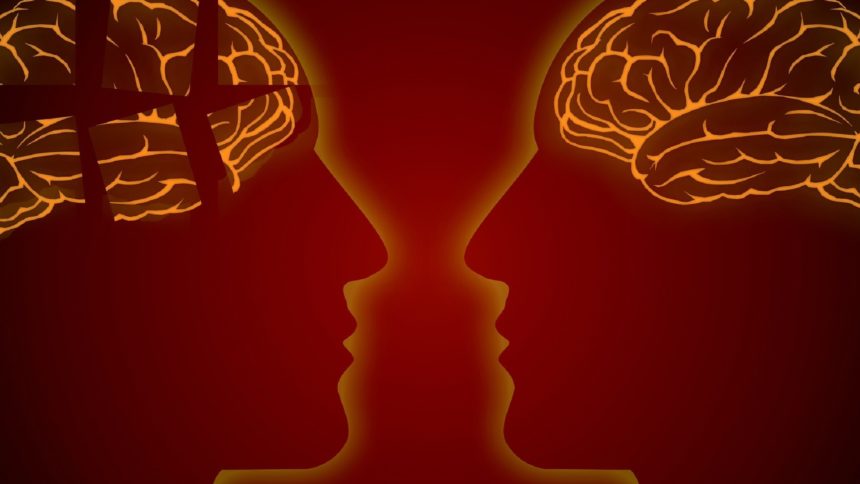Parkinson’s disease is caused by the loss of brain cells that make dopamine transmission. Due to the shortage of dopamine, movements become slower and stiffness develops. This manifests itself in more difficult walking, softer speaking, smaller writing and often a tendency to fall.
When someone has Parkinson’s disease, there is a significant chance that he or she will also develop dementia. That happens in 35 to 55 percent of people with Parkinson’s. Parkinson dementia develops in the brain area affected by Parkinson’s disease, and usually begins 10 to 15 years after the onset of the disease. Men are more likely than women.
Symptoms of Parkinson’s
Characteristic of people with Parkinson’s disease are the hands that shake violently at rest. People with Parkinson’s also slow down and eventually less and less exercise.
This is called hypokinesia or lack of exercise. Their facial expression flattened into a so-called mask embrace. They talk monotonously and softer and get a stiff body posture. The patient goes with small, shuffling passes and then inclines forward with the upper body. Because the voice becomes softer, they start to talk more and more unclear, it becomes increasingly difficult to understand them.
Causes of Parkinson’s disease
The movement disorders that are so typical of Parkinson’s disease are caused by the death of cells in an area in the midbrain. That area is called the ‘substantia nigra‘ (‘black core’) and controls the movements of the body.
In many people with Parkinson’s disease abnormal protein deposits are found: the so-called Lewy bodies. These protein deposits also cause Lewy Body Dementia. Parkinson’s disease is usually not hereditary, but can occur more often in a family.
Recognition of dementia in a person with Parkinson’s disease
If the person with Parkinson’s disease also develops dementia, you notice this when the patient has:
- A delay of thinking and speaking;
- Problems with planning, concentrating, problem solving, or multi-task;
- Problems with braking or just starting up movements;
- A decrease in the ability to improvise or to act in case of unexpected events;
- Memory problems, especially with retrieving memories. Storing new information and recognizing information usually goes quite well;
- Decrease of the ability to abstract thinking; the patient is increasingly unable to make a representation of things and concepts that they can not see, feel or perceive with other senses, such as ‘culture’, ‘family’ or ‘infinite’.
In some people with Parkinson’s disease, the course of dementia resembles that of Alzheimer’s disease.
Parkinson’s stages according to the scale of Hoehn and Yahr.
This scale, was introduced in 1967, as the first to describe the progression of Parkinson’s disease. It contains five stages of disease progression and still serves as a basis for the definition of different Parkinson’s disease stages.
Stage 1
This is the initial stage characterized by mild sypmtoms such as rigidity, tremors, or slowness of movement in the leg or arm on one side of the body. The symptoms at this stage usually do not affect daily activities. Changes in facial expression may be noticed by the patient’s close relatives and friends.
Stage 1.5
This stage is similar to stage 1. The body axis starts to be affected, but without impairment of balance.
Stage 2
Symptoms start to worsen at this stage with tremor, rigidity, and other movements affecting both sides of the body and the body axis. Problems with walking and poor posture are noticeable. Daily activities become more difficult, but the person is still able to live independently.
Stage 2.5
This stage is similar to stage 2, and body balance starts to become impaired. The patient is, however, still able to recover from the so-called pull test that is used to assess stability. In this test, someone pulls the patient backward on the shoulders, and the patient’s ability to recover shows how severely their balance is affected.
Stage 3
This is the mid-stage of the disease characterized by loss of balance and slowness of movement. Falls become more common during this stage. The patient is, however, still able to live alone, and able to do daily activities such as dressing or eating.
Stage 4
In this stage, symptoms are severe and very limiting. It is still possible for the patient to stand without assistance, but he or she is not able to live alone and needs help with daily activities.
Stage 5
This is the most advanced and debilitating stage of the disease. Patients have great difficulty walking or standing. They are not able to live alone and require a wheelchair to move around. Assistance is needed in all daily activities. Besides motor symptoms the person may see, hear, or experience things that are not real (hallucinations), or believe things that are not true (delusions).
Treatment of Parkinson’s disease
Parkinson’s is a disease that progresses slowly. There is yet no effective medicine for it. The treatments used to cure Parkinson disease are medication, drug therapy, surgery, physiotherapy, speech and language therapy and occupational therapy. Medication treatment is popular treatment to cure symptoms of Parkinson. Treatments like drug treatment, surgery and brain image can give side effects. The most common treatment used to control Parkinson is stimulation of Dopamine receptors. Repairing the brain cells treatment is an advanced treatment for Parkinson disease.

